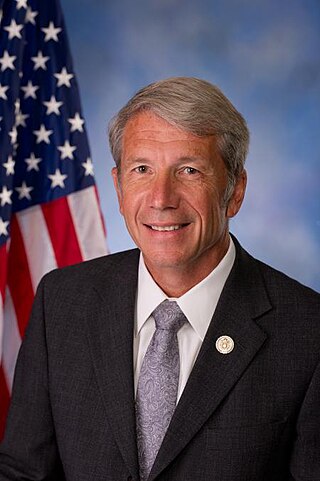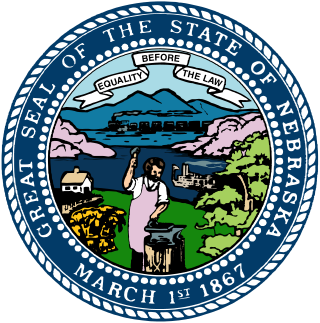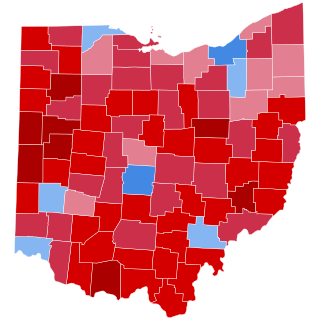Electoral results
House of Representatives
| Congress | Overall seats | Democratic seats | ± |
|---|---|---|---|
| 116th (2018) | 49 / 435 | 49 / 233 | |
| 117th (2020) | 47 / 435 | 47 / 222 | |
| 118th (2022) | 45 / 435 | 45 / 222 |
Blue Collar Caucus | |
|---|---|
| Co-Chairs | Brendan Boyle Marc Veasey |
| Founded | December 1, 2016 [1] [2] [3] [4] |
| Ideology | Laborism [5] Protectionism [6] Keynesianism [7] Anti-globalization [8] Left-wing populism [9] |
| Political position | Left-wing [10] |
| National affiliation | Democratic Party Trade unions: [11] AFL-CIO IAMAW |
| Colors | Electric blue |
| Seats in the House | 45 / 435 |
| Seats in the House Democratic Caucus | 45 / 220 |
The Blue Collar Caucus is a United States Democratic Party congressional caucus that advocates for labor and working class priorities. It was founded in 2016 to focus the Democratic Party on blue-collar issues. [3] The caucus supports increased infrastructure spending and opposes offshoring. [1] The grouping aims to negate the elitist image of the Democratic Party and appeal to the blue-collar voters that were "lost" to Donald Trump by focusing on economic issues and promoting left-wing economic causes, abandoning the "urban, educated and socially liberal voices" in the party in favor of blue-collar ones. [12] Members of the caucus believe that the Democratic Party lost votes "by marching left on social issues" and offers to refocus on poor areas instead of the "coastal strongholds"; the caucus also has ties to major trade unions such as AFL-CIO and IAMAW. [11]
Members of the Blue Collar Caucus believe that the Democratic Party does not focus on the issues of blue-collar workers. [13] The founder of the caucus, Brendan Boyle, argues that the party should develop its own kind of left-wing populism to combat the working-class appeal of Donald Trump. [9] The caucus wants to raise wages of the lower and middle class, supports the wealth tax of Elizabeth Warren to tax the top-earners more, [9] and advocates protectionist measures, opposing NAFTA and the Trans-Pacific Partnership. [13] The caucus is considered economically progressive, [14] and its leader supports the Green New Deal, a single-payer healthcare system, and the federal minimum wage of $15.00 per hour. [15] The caucus also stresses the importance of promoting protectionism, with Veasey stating: "On trade, we have to be out in front of Trump"; it also proposes a partial retreat by Democrats on social and environmental issues in favor of a core economic appeal, arguing that Trump's economic rhetoric won him the 2016 election. [16]
While the Blue Collar Caucus was compared to the Congressional Progressive Caucus in terms of economic issues, it leans more conservative socially. The Blue Collar Caucus believes that the Democratic Party has become the "party of the elite", eschewing working-class issues in favor of appealing to educated, urban and socially liberal voters; as such, the caucus advocates for abandoning what it calls identity politics in favor of a sweeping left-wing economic message that would appeal to blue-collar workers instead. Members of the caucus cite Bernie Sanders's statement that "the Democratic Party has become a party of the coastal elites, folks who have a lot of money, upper-middle-class people". [12] The caucus envisions a Democratic Party as the champion of the "working people, not Wall Street and corporate interests", [17] while abandoning "progressive vanguard" politics. [18]
| Congress | Overall seats | Democratic seats | ± |
|---|---|---|---|
| 116th (2018) | 49 / 435 | 49 / 233 | |
| 117th (2020) | 47 / 435 | 47 / 222 | |
| 118th (2022) | 45 / 435 | 45 / 222 |
According to the founders of the Blue Collar Caucus, its goal is to re-orient the Democratic Party to focus on issues such as trade unions, wage stagnation, offshoring and job insecurity, especially in case of manufacturing and building workers. [19] The caucus argues that the working-class voters were a backbone of the Democratic Party, and that the loss in the 2016 presidential election can be attributed to eroding confidence of this voting bloc in the party. Founders of the Blue Collar Caucus expressed concern that the Democratic Party became the "party of the elite", where "urban, educated and socially liberal voices" displaced economic and working-class issues. [12]
The caucus contends that the Democratic Party needs to "articulate an economic message that really gets beyond identity politics", and instead of attacking the Republic Party for its social conservatism, it should instead be attacked for being a party that gives "tax breaks to the wealthiest Americans and big corporations, and gives very little to the working class." [12] The members of the caucus also proposed an economic agenda for the party known as "A Better Deal", which would address wealth inequality, lack of opportunity and wage stagnation, along with hedging on social issues in favor of a purely economic focus. [20]
In March 2018, former Vice President Joe Biden met with the Caucus to discuss 2018 midterm campaigning. [22] [23]

A Reagan Democrat is a traditionally Democratic voter in the United States, referring to working class residents who supported Republican presidential candidates Ronald Reagan in the 1980 and the 1984 presidential elections, and George H. W. Bush during the 1988 presidential election. The term Reagan Democrat remains part of the lexicon in American political jargon because of Reagan's continued widespread popularity among a large segment of the electorate.
American electoral politics have been dominated by successive pairs of major political parties since shortly after the founding of the republic of the United States. Since the 1850s, the two largest political parties have been the Democratic Party and the Republican Party—which together have won every United States presidential election since 1852 and controlled the United States Congress since at least 1856. Despite keeping the same names, the two parties have evolved in terms of ideologies, positions, and support bases over their long lifespans, in response to social, cultural, and economic developments—the Democratic Party being the left-of-center party since the time of the New Deal, and the Republican Party now being the right-of-center party.

The New Democrat Coalition is a caucus in the House of Representatives of the United States Congress made up of Democrats, primarily liberals and centrists, who take a pro-business stance and a liberal-to-moderate approach to fiscal matters. Most members hold socially liberal views, though there is a wide array of views on such issues.
New Democrats, also known as centrist Democrats, Clinton Democrats, or moderate Democrats, are a centrist ideological faction within the Democratic Party in the United States. As the Third Way faction of the party, they are seen as culturally liberal on social issues while being moderate or fiscally conservative on economic issues. New Democrats dominated the party from the late 1980s through the mid-2010s, and continue to be a large coalition in the modern Democratic Party.
The Republican Party in the United States includes several factions, or wings. During the 19th century, Republican factions included the Half-Breeds, who supported civil service reform; the Radical Republicans, who advocated the immediate and total abolition of slavery, and later advocated civil rights for freed slaves during the Reconstruction era; and the Stalwarts, who supported machine politics.

The Democratic Party is one of the two major political parties of the United States political system and the oldest existing political party in the country as well as in the world. The Democratic party was founded in the 1830s and 1840s. It is also the oldest active voter-based political party in the world. The party has changed significantly during its nearly two centuries of existence. Once known as the party of the "common man," the early Democratic Party stood for individual rights and state sovereignty, and opposed banks and high tariffs. In the first decades of its existence, from 1832 to the mid-1850s, under Presidents Andrew Jackson, Martin Van Buren, and James K. Polk, the Democrats usually bested the opposition Whig Party by narrow margins.

The Democratic Party is one of the two major contemporary political parties in the United States. Since the 1850s, its main political rival has been the Republican Party.

Mark William Pocan is an American politician and businessman serving as the U.S. representative from Wisconsin's 2nd congressional district since 2013. The district is based in the state capital, Madison. A member of the Democratic Party, Pocan is co-chair of the Congressional LGBT Equality Caucus and chair emeritus of the Congressional Progressive Caucus. From 1999 to 2013 he served as a member of the Wisconsin State Assembly, representing the 78th district, succeeding Tammy Baldwin there, whom he also replaced in the House when Baldwin was elected to the U.S. Senate.
The Democratic Party of the United States is a big tent party composed of various factions. The liberal faction supports modern liberalism and social liberalism that began with the New Deal in the 1930s and continued with both the New Frontier and Great Society in the 1960s. The moderate faction supports Third Way politics that includes center-left social policies and centrist fiscal policies. The progressive faction supports social democracy and left-wing populism.

Walter Kurt Schrader is an American politician and veterinarian who served as the U.S. representative for Oregon's 5th congressional district from 2009 to 2023. His district covered most of Oregon's central coast, plus Salem, and many of Portland's southern suburbs, and a sliver of Portland itself. A member of the Democratic Party, Schrader served in both houses of the Oregon Legislative Assembly from 1997 to 2008.
The Pew Research Center political typology is a political spectrum model developed by the Pew Research Center. It defines a series of voter profiles that identify specific segments of the electorate. First released in 1987 by the Times Mirror Company, the typology is updated every few years to reflect recent changes in the American electorate.

Brendan Francis Boyle is an American politician serving as a Democratic member of the United States House of Representatives, representing a district in the Philadelphia area since 2015. Since January 2023, he has served as Ranking Member of United States House Committee on the Budget. He represented the 13th district from 2015 to 2019, serving much of Northeast Philadelphia and most of suburban Montgomery County. Since 2019, he has represented the 2nd district, which is entirely within the City of Philadelphia, including all of Northeast Philadelphia and portions of North Philadelphia and Center City Philadelphia, largely east of Broad Street. Boyle represented the 170th district in the Pennsylvania House of Representatives from 2009 to 2015.

Marc Allison Veasey is an American politician serving as a member of the United States House of Representatives for Texas's 33rd congressional district. From 2005 to 2013, he was a member of the Texas House of Representatives, where he served as chair pro tempore of the House Democratic Caucus.

The 2022 United States elections were held on November 8, 2022, with the exception of absentee balloting. During this U.S. midterm election, which occurred during the term of incumbent president Joe Biden of the Democratic Party, all 435 seats in the U.S. House of Representatives and 35 of the 100 seats in the U.S. Senate were contested to determine the 118th United States Congress. Thirty-nine state and territorial U.S. gubernatorial elections, as well as numerous state and local elections, were also contested. This was the first election affected by the 2022 U.S. redistricting that followed the 2020 U.S. census. The Democratic Party's trifecta was replaced by a split Congress after the Republican Party narrowly regained control of the House, while Democrats slightly expanded their majority in the Senate.

The 2018 United States House of Representatives elections in Pennsylvania were held on November 6, 2018, to elect the 18 U.S. representatives from the Commonwealth of Pennsylvania, one from each of the state's 18 congressional districts.

In the United States, Obama–Trump voters, sometimes referred to as Trump Democrats or Obama Republicans, are people who voted for Democratic Party nominee Barack Obama in the 2008 or 2012 presidential elections, but later voted for Republican Party nominee Donald Trump in 2016 or 2020. Data shows that in 2016, these voters comprised roughly 13% of Trump voters. In 2012, this segment of voters made up 9% of total Obama voters. Seven percent of 2012 Obama voters did not vote at all in 2016, and 3% voted for a third-party candidate. While some analysts consider Obama–Trump voters to have been decisive in Trump's 2016 victory, others have disputed this conclusion.

The 2020 United States House of Representatives elections in Nebraska was held on November 3, 2020, to elect the three U.S. representatives from the state of Nebraska, one from each of the state's three congressional districts. The elections coincided with the 2020 U.S. presidential election, as well as other elections to the House of Representatives, elections to the United States Senate and various state and local elections.

The 2020 United States presidential election in Ohio was held on Tuesday, November 3, 2020, as part of the 2020 United States presidential election in which all 50 states plus the District of Columbia participated. Ohio voters chose electors to represent them in the Electoral College via a popular vote, pitting the Republican Party's nominee—incumbent President Donald Trump and his running mate, Vice President Mike Pence—against the Democratic Party nominee, former Vice President Joe Biden and his running mate, California Senator Kamala Harris. Ohio had 18 electoral votes in the Electoral College.

The 2020 United States presidential election in New York was held on Tuesday, November 3, 2020, as part of the 2020 United States presidential election in which all 50 states plus the District of Columbia participated. New York voters chose electors to represent them in the Electoral College via a popular vote, pitting the Republican Party's nominee, incumbent President Donald Trump, and running mate Vice President Mike Pence against Democratic Party nominee, former Vice President Joe Biden, and his running mate California Senator Kamala Harris. New York had 29 electoral votes in the Electoral College. Trump announced that Florida would be his home state for this election, rather than New York as it had been previously. This was the first presidential election in New York to allow no-excuse absentee voting.
Blue Collar Caucus, caracterizado por uma pauta trabalhista e agenda keynesiana;